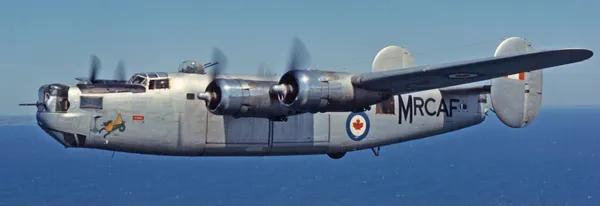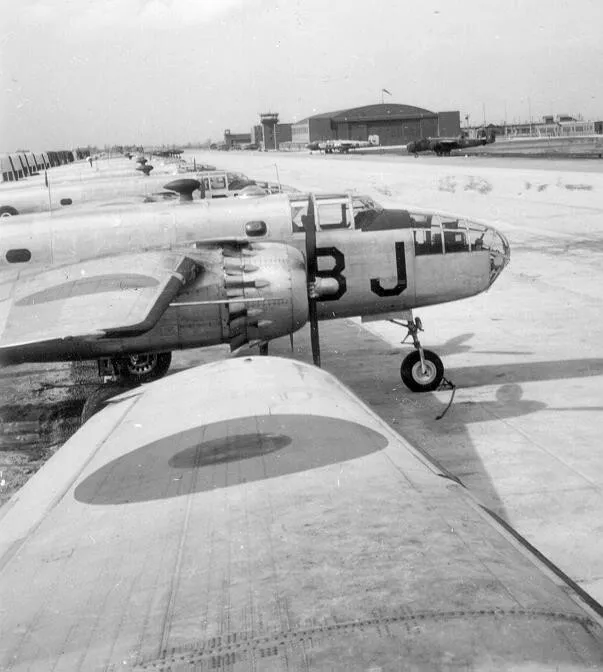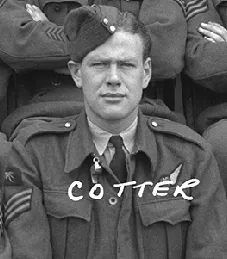Curtis, Harry Arthur (Sergeant)
Killed in Flight Line Accident 1944-October-09


Birth Date: 1923-January-01
Born:
Parents: Harry James and Edith Curtis
Spouse:
Home: Carlshalton, Surrey, United Kingdom
Enlistment:
Enlistment Date: unkown date
Service
RAFVR
Unit
5 OTU- Operational Training Unit
Base
Abbotsford, British Columbia, Canada
Rank
Sergeant
Position
Service Numbers
1321235
Crew or Other Personnel
Liberator EW282
Accident Card - Consolidated Liberator B. Mk. VI serial:EW282
This accident involved 1 aircraft on 1944-October-09. Liberator s/n EW282.
This accident involved 4 people. Cotter PS, Curtis HA, Green JW, Milton CDB
This accident had 2 fatalities. Sergeant Paul Stuart Cotter RAFVR Killed in Flight Line Accident service no:1334016 Liberator EW282, Sergeant Harry Arthur Curtis RAFVR Killed in Flight Line Accident service no:1321235 Liberator EW282
Liberator serial: EW282

Consolidated Liberator G.R. Mk. VIII, RCAF (Serial No. 11130) ex-USAAF Consolidated (Vultee) B-24L Liberator USAAF (44-50154)
ex-RAF (Serial No. 5009), ex-Indian Air Force (Serial No. HE773).
Currently preserved in the Canada Aviation and Space Museum Ottawa Ontario.
The Consolidated B-24 Liberator was an American heavy bomber flown by the RCAF during the Second Word War. It was designed with a shoulder-mounted, high aspect ratio Davis wing which gave the Liberator a high cruise speed, long range and the ability to carry a heavy bomb load. Early RAF Liberators were the first aircraft to cross the Atlantic Ocean as a matter of routine. In comparison with its contemporaries the B-24 was relatively difficult to fly and had poor low speed performance; it also had a lower ceiling compared with the Boeing B-17 Flying Fortress. Of the roughly 18,500 B-24s built in the USA during the war, 148 were flown by the RCAF on long range anti-submarine patrols, with the B-24 serving an instrumental role in closing the Mid-Atlantic gap in the Battle of the Atlantic. The RCAF also flew a few B-24s post war as transports.
Roughly half of all (RAF) Liberator crews in the China-Burma-India (CBI) Theatre were Canadian by the end of the war. John Muir of Vancouver flew the longest mission of the war: 24hrs, 10mins from Ceylon to Burma and back. (Kyle Hood) Harold Skaarup web page
Aircraft Images
Liberator EW282
Liberator B. Mk. VI EW282
Ex USAAF B-24J-30-CF, serial number 44-10285. Served with No. 5 Operational Training Unit at RCAF Stations Boundary Bay and/or Abbotsford, BC. Stolen at 04:00 on 6 December 1944 by Sgt. D.P. Scratch (see Bolingbroke 9064). He became bogged down east of Runway 20, damaging or destroying all engines in attempt to get free. He abandoned this aircraft, and then stole Mitchell HD343 . To workshop reserve at Boundary Bay on 8 December 1944. To Canadian Pratt & Whitney for repairs on 1 January 1945, probably a mobile repair party at Boundary Bay. On the books of No. 22 Sub-Repair Depot from 31 January 1945. Repairs not completed until 11 August 1945, to storage then with Western Air Command. Noted with 356:35 logged time on that date. On the books of Maintenance Command by 27 November 1945, stored at Reserve Equipment Maintenance Satellite Abbotsford. Stored at No. 7 Reserve Equipment Maintenance Unit at Abbotsford by 6 March 1946, pending disposal from that date. Scrapped in 1947.1944-06-03 Taken on Strength Western Air Command 2019-08-20
1944-October-09 Accident: 5 Operational Training Unit Loc: Aerodrome Names: Cotter | Curtis | Green | Milton
1944-December-06 Accident: 5 Operational Training Unit Loc: Boundary Bay British Columbia British Columbia Names: Scratch
1947-04-18 Struck off Strength Struck off, to War Assets Corporation for disposal 2019-08-20
Unit Desciption
5 OTU (5 Operational Training Unit)
The Operational Training Unit (OTU) was the last stop for aircrew trainees. They spent 8 to 14 weeks learning to fly operational aircraft (Hawker Hurricane or Fairey Swordfish, e.g.). The instructors had experience in actual operations, and often were posted to OTUs after their operational tour.
